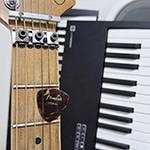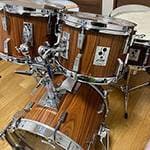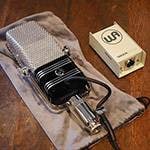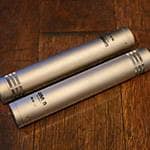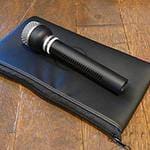Atlansia, the “Island of the Great Ocean”. A small island that might be swept away by the rough waves.
However, it struggles on alone! A creative continent constantly challenging itself to create innovative things.
The goal is to reach the grand world of guitar romance. - N. Hayashi— Quoted from the message from Atlansia’s Creative Continent
- List of Atlansia Guitars -
Eden
Galaxy
Oscar
Otapman
Pegasus
Peleske
Peleske 2
Pentagone
Stealth
Stroke
The Century
Victoria
Solitaire
- List of Atlansia Basses -
Alien
Baroque
Bohemian
Breeze(a.k.a.Zipang)
Concord
Corint
Dualist
Fortune
Galaxy
Garland
Jupiter
Leonore
Oscar
Oxford
Pegasus
Pentagone
Solitaire
Sophia
Stealth
The Century
Trister
Victoria
- List of Abalone Instruments -
Abalone 4st Bass
Abalone Model T-1
- Profile -
Cheena: After discovering the shape of the Pegasus, I couldn’t help but want only that. Besides it, I like Victoria, Sophia, and Oxford. I often copy or redesign the Pegasus, but ATLANSIA despises imitation...
→ List of Cheena’s Articles
Nemoto: Since I saw a Victoria at a music store in Narita when I was a child, I’ve been fascinated by the brand. I like many models such as Galaxy and Pegasus, but the one I truly want is a fretless Victoria.
→ List of Nemoto’s Articles
- Part 1 Contents -
- 1 - What is Atlansia?
- 2 - Victoria Bass
- 3 - Pegasus Bass
- 4 - Atlansia Pickups
- 5 - Oxford Bass
- 6 - Solitaire, Dualist & Trister Basses
Cheena: Well... it’s begun.
Nemoto: Ah... the article about the Atlasia we love... I feel like we might leave the readers behind.
1 - What is Atlansia?
Cheena: First, let’s briefly explain the background.
The representative, Nobuaki Hayashi, after working on instrument designs for Matsumoto Guitars and Aria, became independent in 1978 and established the Hayashi Nobuaki Guitar Workshop (now: Atlansia).
He does not condone imitating other companies’ designs and has introduced numerous instruments with unique designs and special features, selling them through custom orders.
These instruments are renowned for their thick and sturdy necks, which can be as thick as 30mm. They are also known for having very rounded fingerboards, with models like Garland and Pegasus featuring a 50-100R compound radius, and Concord and Victoria having a 120-180R compound radius. To put this in perspective, when compared to the 184R radius often described as round on vintage Jazz Basses or Jazzmasters, it becomes apparent how distinctive these instruments are. Interestingly, even though multi-string models are the main focus, some 4-string models also feature compound radii of 300-400R. They are flatter than a Les Paul (305R).
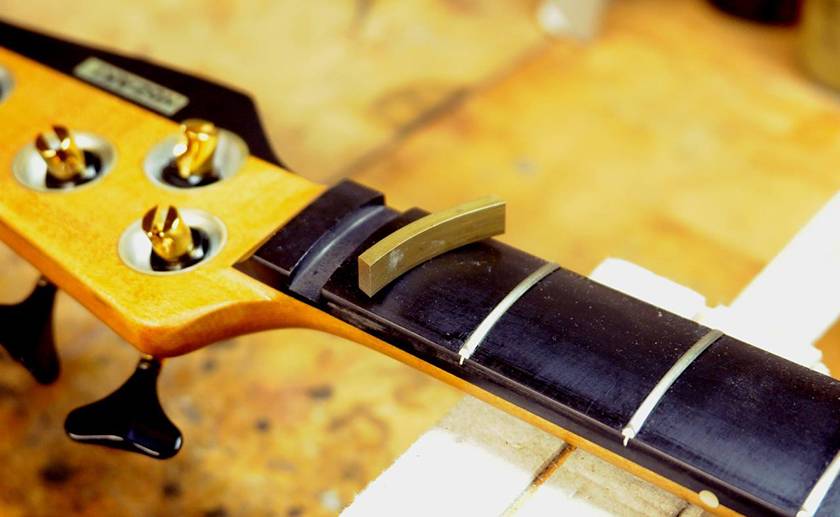
Another characteristic is that most of the parts, excluding the tuners, are original designs, with a strong emphasis on creating custom parts such as independent bridges, individual string pickups, jack mounts, and knobs.
Among the instruments designed by him, the Aria PE Series, SB Series, and the Atlansia Oxford bass are particularly famous. Even today, the heads of the PE series guitars carry the words “Designed & Approved By H. Noble”.
*H. Noble... a play on his name Nobuaki Hayashi.
Nemoto: The famous models are definitely around those, I think.
To add, I don’t know the current reputation, but at least 15 years ago, it was widely regarded as the pinnacle of Japanese-made instruments. It was originally rare to see, but recently, it’s become even more uncommon.
Cheena: It seems they’ve been limiting production numbers as well... Currently, there are no fully original custom orders, but I think they would still make Atlansia-designed instruments if an order is placed. They occasionally post updates on Facebook.
Nemoto: I want a Victoria, but rather than hunting for a second-hand one that might appear at any time, I think it would be better to place an order. My desire for it grew after I saw a fretted Victoria on a certain site recently... I’ve been saving up for a Fodera, but maybe I should switch to a Victoria instead.
Cheena: Fodera has a good number of them. At least, they are seen more often than Atlansia...
2 - Victoria Bass
Cheena: The Victoria that Nemoto is referring to is this design.
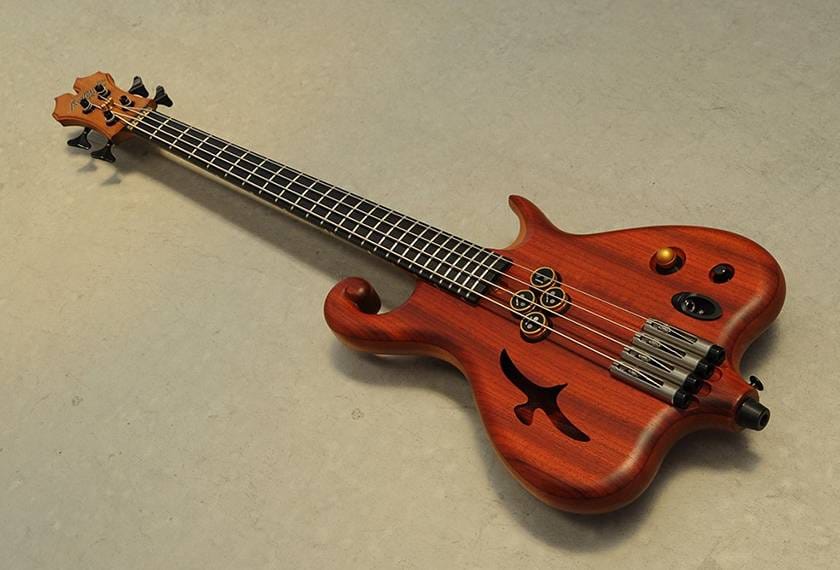
The body of this type, using mahogany, padauk, and walnut, gives a similar impression to Alembic.
Nemoto: Regarding the design, I personally feel a Carl Thompson influence. Since there are similarities with Alembic, it’s probably expected...
*Carl Thompson
A builder who, in my mind, had an influence on later generations comparable to Leo Fender. Vinny Fodera, Ken Smith, and Ron Wickersham (founder of Alembic) were all apprentices under him. Many other builders from Carl’s workshop are also notable. He’s known as the ‘Stradivarius of basses’ with intricate woodwork, but ironically, his apprentices are more famous...
Cheena: As for the specifications, it basically comes with an active 3-band EQ, and when there are two pickups, a balance control is added. Additionally, in the case of a two-hole semi-hollow, the knobs are placed inside the F-holes.
By the way, the black object at the body end is a rubber cushioning material, which is useful for protection when placed in a case or when dropped. I think it was also used on the Garland.
Nemoto: The knobs inside the F-holes are unusual, right? You can really see the uniqueness there.
There are various specifications for the Victoria, but right now, I’m most interested in the L900 (900mm scale, non-independent bridge), so I’m currently inquiring if they can make one for me. I haven’t seen the actual instrument, so I think I should wait to see it first, but there’s nothing available...
*Additional Note
It turns out the L900 has been discontinued. I’ll take my time searching for a second-hand one...
Cheena: 900mm is about 35.5 inches, which is just a bit longer than a super long scale, so if you choose the wrong strings, you might end up not being able to string it. Atlansia’s bridge is for top-load only, so it should be fine... For us tall folks (both of us are over 180cm), it’s a reliable scale length.
Nemoto: Readers, most strings these days are compatible with through-body routing, so even with a 34-inch scale, it usually works fine, but I had a bad experience with super cheap strings from company A (they were too short for through-body routing), so be careful... I prefer long scales because they give the sound more tension (especially in the low end), and since the frets are a bit wider, I think it’s easier to play higher frets. If you have smaller hands, you can adjust by going from ‘one finger per fret’ to ‘four fingers on the third fret (index, middle, ring, and pinky)’.
I recently saw a solid-body passive Victoria, and it looked really cool. I could talk endlessly about Victoria, but let’s move on to a different model.
Cheena: Can we talk about Pegasus?
Nemoto: Let’s go. My love for it is about to explode.
3 - Pegasus Bass
Cheena: The Pegasus bass lineup includes 4-string to 6-string versions, and the guitar version has a 6-string model. Notable features in both appearance and functionality include:
- Long horns
- The placement of the wrist rest
- The unique control layout
- Split body design
In particular, the knobs are placed in unusual positions (near the neck end on the left side), with wiring routed through a groove carved into the neck pocket from this area. It’s easier to show you in a photo than explain in words...
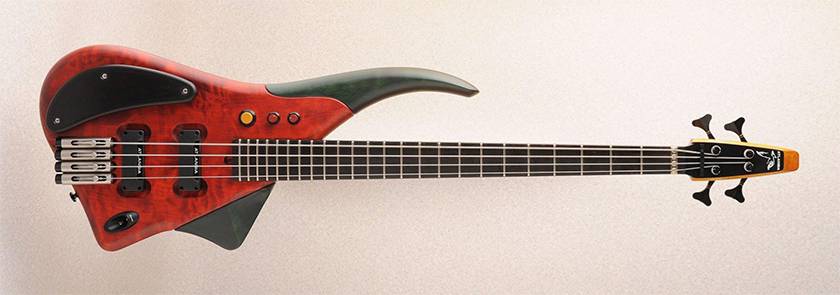
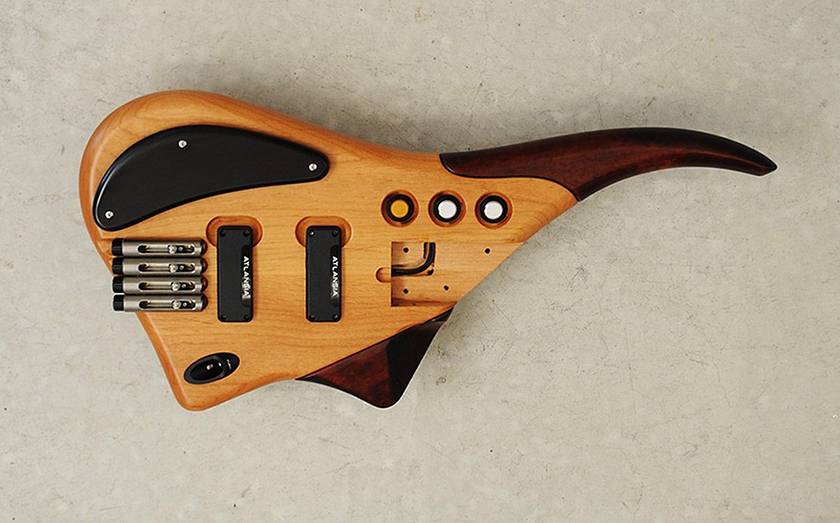
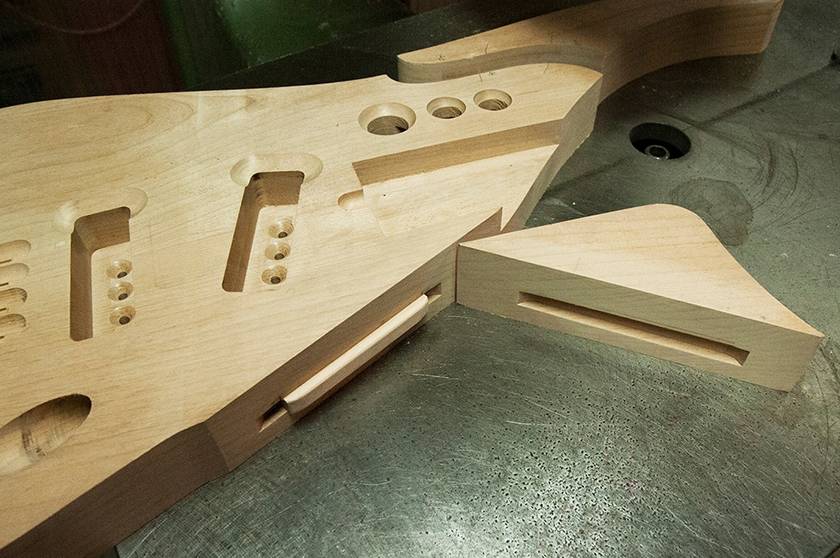
It’s a shape that fits descriptions like sleek, strong, and elegant.
The passive version typically has 1 Vol and 1 Bal, while the active version usually comes with 1 Vol, 3 EQ, and 1 Bal. However, looking at custom orders, you’ll find various different knob configurations. In fact, the one in the picture is a 3-knob setup with an added Tone.
Nemoto: It’s distinctive, for sure. I really like the long horns and the sleek design that comes from the neck. There are versions with a non-split body, but I think I prefer those, though it does make the design a bit less angular.
Cheena: The deep cutaway makes the neck look longer, doesn’t it? I’ve heard there are two types of body connections: one using dowels and the other using bolts. I haven’t been able to confirm the bolted version with photos yet.
Nemoto: I didn’t know there was a bolted version... I think the Pegasus would look even cooler with an L900 long scale, though that’s not available...
Cheena: I read on a blog by someone who owns the guitar version that the pickup cavity is bolted. It seems like it would be difficult to drill diagonally like a spring hanger, so I’m not entirely sure how it’s done. I’d take that with a grain of salt.
As for the L900, I guess I’ll have to try it myself. I’d like to try it with a 5-string version.
Nemoto: If you pre-drill screw holes in both the body and horn connections and then tighten it with an offset driver, I think it could work. But from the pickup cavity, that’s a long way... Maybe it’s the control cavity? If it’s bolted, maybe they were planning to make the horn replaceable.
The L900 conversion sounds really interesting, so I’m looking forward to it.
Cheena: Even without an offset driver, a hex wrench should work fine. That said, if they didn’t use glue for strength and sound quality reasons (though it’s not a critical part for vibration transmission), it’s probably to allow for replacement...
*Additional Note
I was told the bolts are fixed with adhesive. The source is from the current owner’s Twitter, so I’ll leave it out.
As I mentioned in my profile, I’ve imitated this many times, so let me introduce a few examples here.
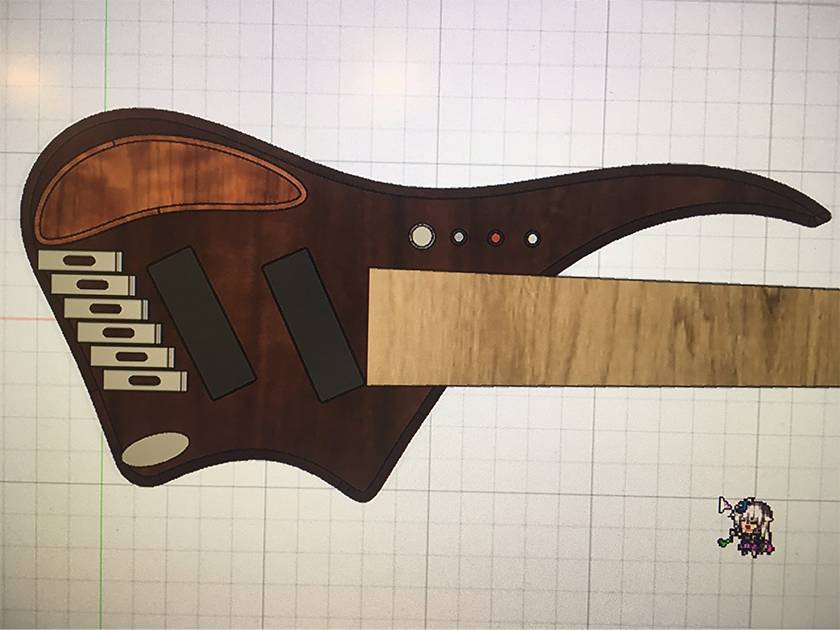
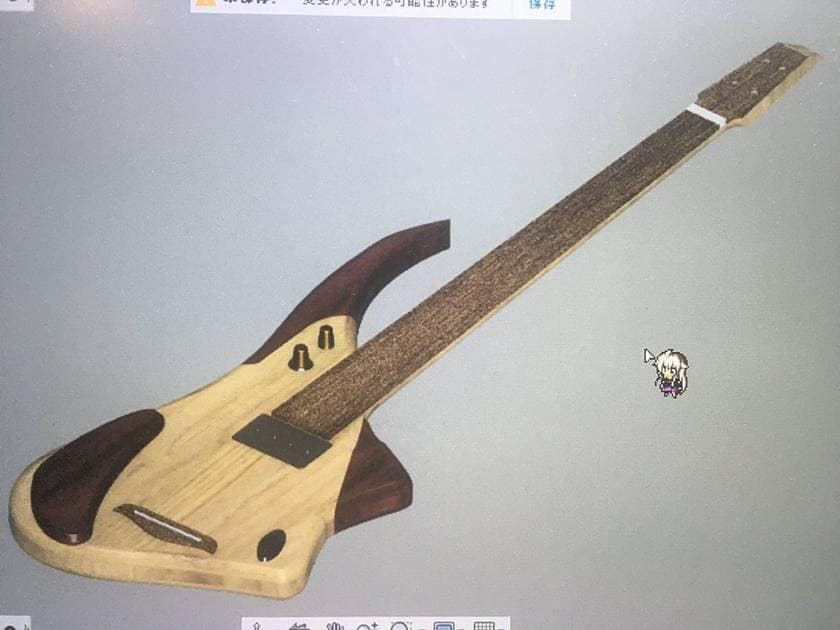
The versions I actually made turned out to be so poorly made and so far from the original that I can’t show them. One thing I can say for sure is that aligning the split-horn type by hand is extremely tedious... even if you make a template, it shifts when using a trimmer, so you need to use CNC for it to work properly.
Nemoto: Since it’s not straight, right...
4 - Atlansia Pickups
Nemoto: I personally like the ARC (individual pickup for each string) wired in series, with the front pickup slanted—it just looks good. What do you think?
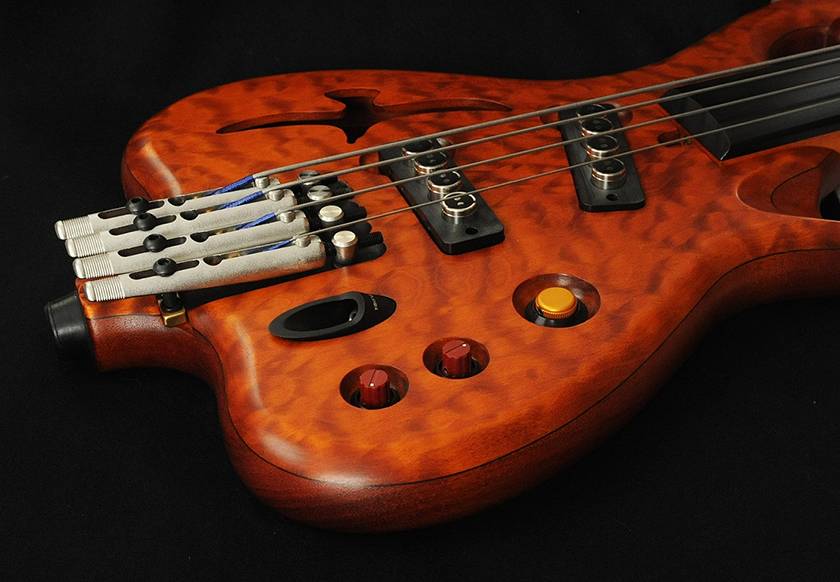
Cheena: I love the version with three ARC pickups stacked per string. The combination with the 6-string setup makes it look really unique. That said, I also like the standard two soap bars.
Now, this is based on my own research, but Atlansia’s soap bar pickups seem to be about 1.5 inches wide, with the top surface shaped to match the fretboard radius. Also, the ‘Atlansia’ logo on the pickups is slightly recessed and filled with either gold or white lettering.
Of course, no commercially available pickups have this exact design (not even in the Atlansia Parts Shop), so if someone were to build a replica, they’d probably have to use a standard soap bar pickup instead...
Nemoto: Oh yeah, I remember the ones with three stacked pickups—definitely has that alien look. Soap bars with a curved top surface are getting rare these days. Bartolini used to have them back in the day.
Cheena: I like the smooth look. Among the more unique soap bars, it might be one of my favorites, right up there with the Classic Washburn. That’s about it.
Nemoto: Now that you mention it, Atlansia does have single pickups, but I hardly ever see them. They’re pretty niche.
Cheena: Even the budget-friendly Abalone model comes with soap bars... The only real example of a two-slanted single pickup model is the Stealth, which is featured on their official site. Other than that, there are just their guitars.
Nemoto: Jupiter has them too. Most of their models use soap bars, though.
Next up... should we talk about Oxford?
5 - Oxford Bass
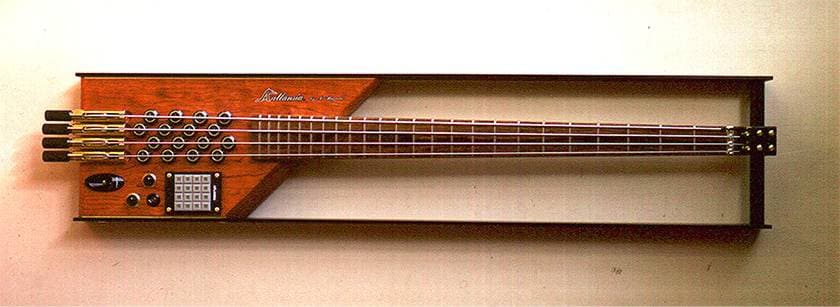
It looks like a precision-cut chisel housed in a skeleton case—absolutely outrageous in appearance. The strings are mounted on the frame, meaning there’s no tension on the neck at all, making it supposedly warp-proof. Theoretically, there’s no contradiction (though in reality, I’d expect some warping due to changes in temperature and humidity—wood is a living material). I seriously considered buying this model, but it was out of stock, and I couldn’t find a used one either.
Cheena: Think of it as the final evolutionary form of stabilizer basses. There’s a lot to discuss, but two easily overlooked features are that it’s headless and that the neck joint is secured with only one bolt. How...?
By the way, this is the only model that comes with a hard case.
It’s an instrument worthy of being called a romantic instrument, yet it also represents the pinnacle of rationality—maybe it’s the ultimate in functional beauty?
*Stabilizer: A structural component apart from the neck that connects the head and body, often extending from the upper horn. Famous examples include the Roland G-77 and large-scale basses by Wishbass.
Nemoto: A single bolt for the neck joint is insane. This kind of stuff is what draws people like us in... I’ve always wondered—can you actually play this sitting down? The strap pin placement seems adjustable, so standing play wouldn’t be a problem.
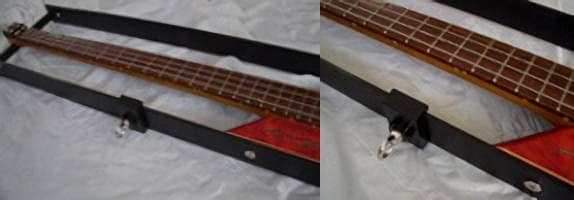
Cheena: Judging from photos, it doesn’t seem to use an Arimizo joint, so it’s probably designed for stability with a deep and narrow joint... I assume. As for seated play, I’ve heard that there’s a detachable or foldable lap rest of some kind. I’ll do some digging.
*Arimizo: Officially called the Arimizo & One Point Joint, a system developed by Freedom C.G.R. The neck pocket and neck end are shaped like an inverted trapezoid, allowing the neck to stay in place without bolts. This enables intentional sound variation based on clamping torque and joint plate swaps.
Freedom C.G.R. Official Website
Nemoto:
I looked it up, and yeah, it does exist. What exactly should we call this part?
Cheena: It’s listed as No.115, the supporter JU-BA.
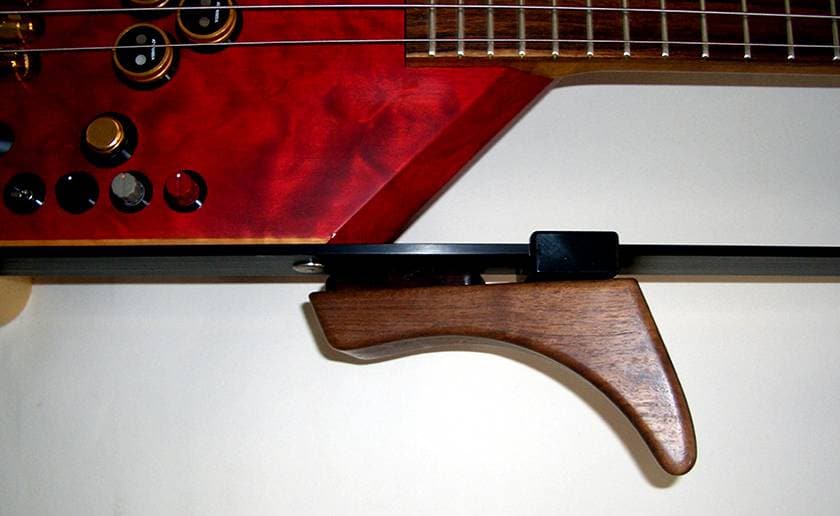
Steinberger calls a similar part the Folding Leg Rest, though...
Nemoto: ‘Leg Rest’ sounds about right. It’s clear and intuitive.
Cheena: Yeah, that makes sense. I wonder if this supporter can be used for a classical-style playing position...
Nemoto: Who knows? Apparently, you can change its mounting position, so maybe? (Totally guessing here.)
I’d love to see one in person, though. The rarity is off the charts.
Cheena: No matter how much I search, only three different pictures show up, so I’m seriously starting to suspect that only three of these exist in the world.
There’s one with four ARS pickups, one with sixteen, and one with what seems to be two guitar-sized humbuckers. If anyone has additional information about Oxford, please contact either me or Nemoto.
Nemoto: Yes, please...
Maybe I should try inquiring. Feels like there could be at least one sitting in a factory warehouse somewhere, don’t you think?
Cheena: Yeah, I really do.
Nemoto: Right? Let’s go through a proper dealer and ask. If they have one, what should we do? I mean... unless the price is absolutely ridiculous, we kind of have to buy it, right?
Cheena: Anyway, shall we move on? Spending too much time on just Oxford...
Nemoto: Yeah... Maybe we should talk about low-string-count basses next? Those definitely have that Atlansia vibe too.
6 - Solitaire, Dualist & Trister Basses
Cheena: Solitaire, Dualist, and Trister—these basses feel like they’ve been stripped down to the absolute essentials of what a musical instrument needs to be.
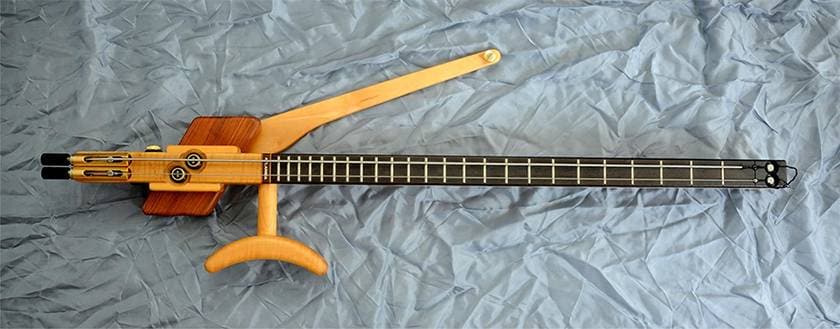
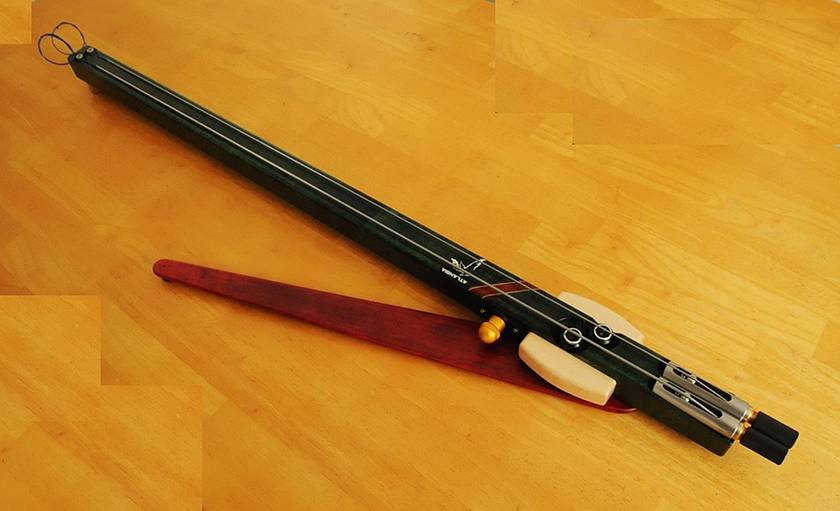
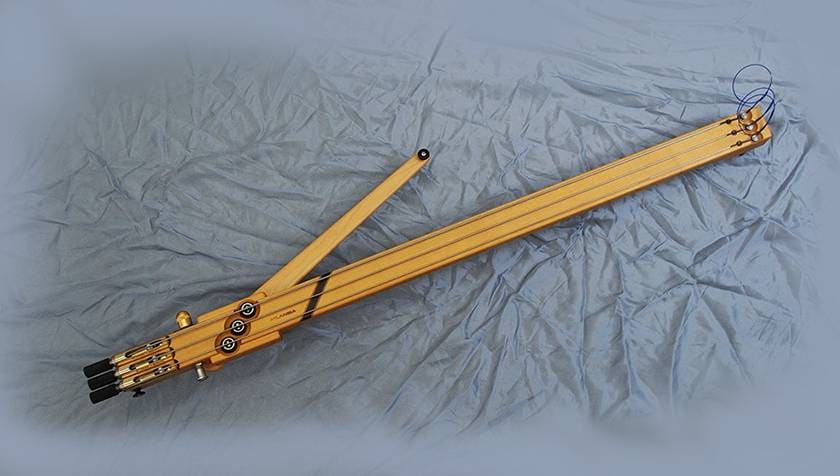
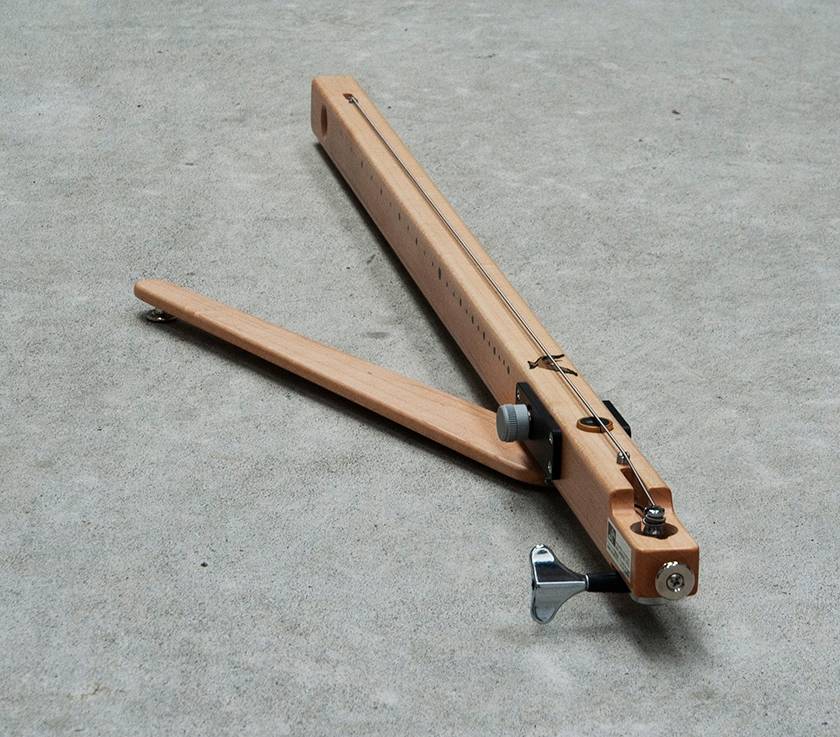
The last one is apparently a mini bass with a 25.5-inch scale. It’s not a Solitaire, but I included it since the inlays are clearly visible.
Nemoto: They’re fascinating. I once interviewed a two-string bass player, and they told me that if they tuned it to something common like A-E, people would just say, “Why not just use a four-string?”—so they deliberately use different tunings. What tuning would you go for? I think I’d try E-G...
Cheena: If it were two strings, I’d probably go for G-C. No particular reason, though...
By the way, one of the standout features of Atlansia’s low-string-count series is the 5mm side inlays—they’re massive.
Nemoto: 5mm is huge (the standard size is around 3mm). Besides these dedicated low-string models, there’s also a two-string Concord.
Cheena: And a two-string Stealth as well.
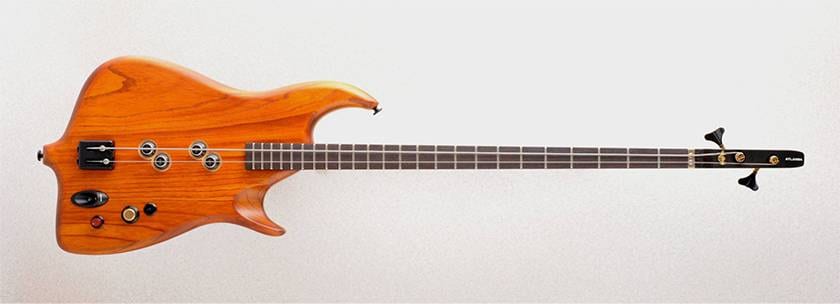
Nemoto: Still, it’s incredible that they managed to design these instruments to work even with just one string.
Cheena: If they had gotten it wrong, they’d just be sticks—well, honestly, even the Trister is basically a stick, but it manages to be more than that. Maybe the tapered horn plays an important role?
Nemoto: I think so. Also, the bridge, pickups, and other hardware are all carefully designed and well-built.
Cheena: They’ve incorporated the individual bridges and single-string pickups used in other Atlansia models. I heard a rumor that Fernandes was planning to copy them. I wonder how well they can replicate these features.
Nemoto: Fernandes is making a copy? That’s news to me.
I looked it up, and it turns out it’s already on sale.
They’re using off-the-shelf bridges and tuners (not dedicated headless hardware) and a lipstick pickup mounted vertically. It’s actually well put together.
That said, Atlansia’s original costs ¥110,000, while Fernandes’ version is ¥70,000. Considering the price difference, I’d still go for the original.
Cheena: Yeah, that makes sense... Anyway, shall we move on?
Nemoto: Let’s. Maybe we should switch things up and talk about guitars for a change. Atlansia is primarily a bass manufacturer, so they don’t have that many guitars.
Cheena: Guitar talk sounds good. But if we get into design details, I feel like this could go on forever. Should we keep going?
Nemoto: No, let’s wrap it up here.
Cheena: Sounds good. Stay tuned for Part 2!
*Image Source: Atlansia Official Website and Facebook.
⇒ Searching for the Isolated Island of the Great Ocean - Atlansia - Part 2
The “sound & person” column is made up of contributions from you.
For details about contributing, click here.






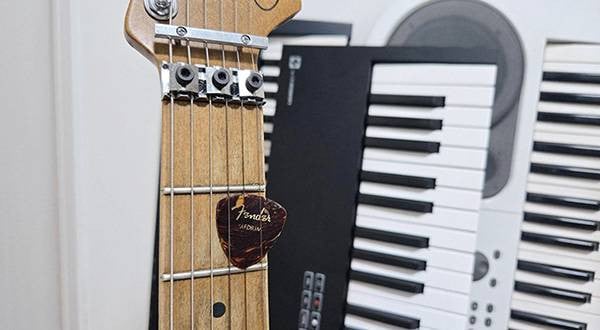
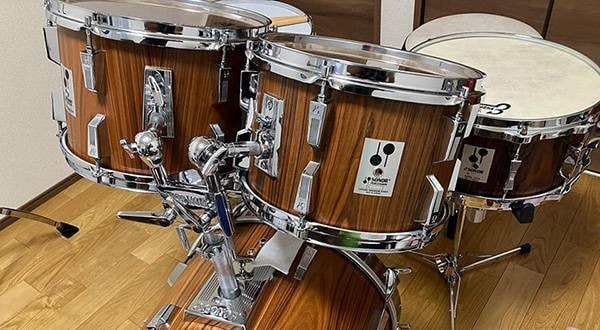
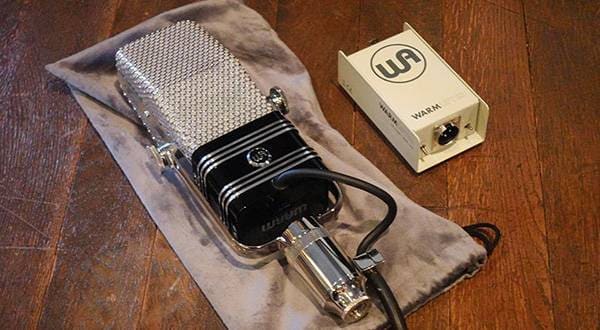
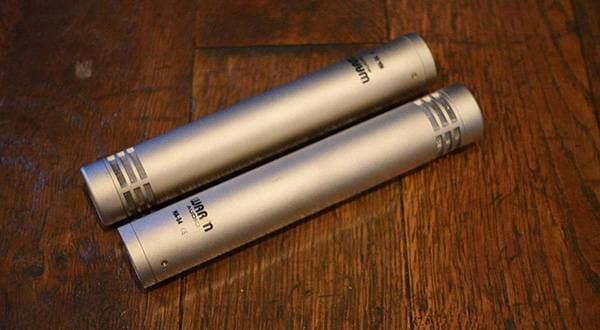

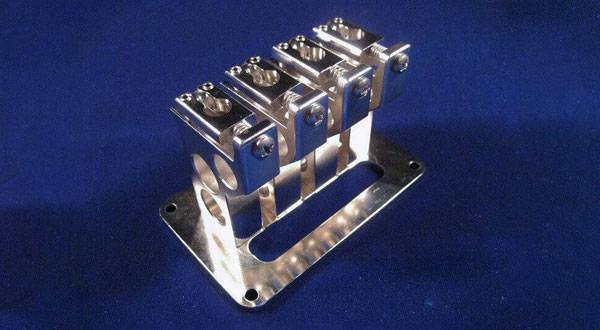
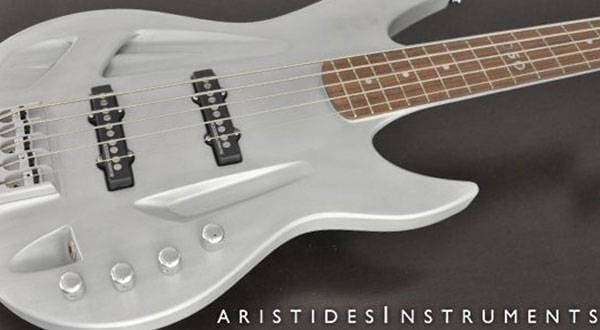
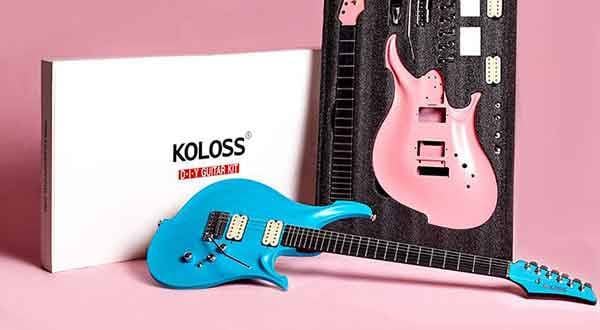
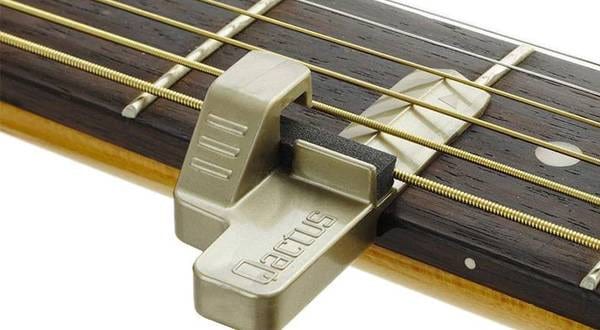
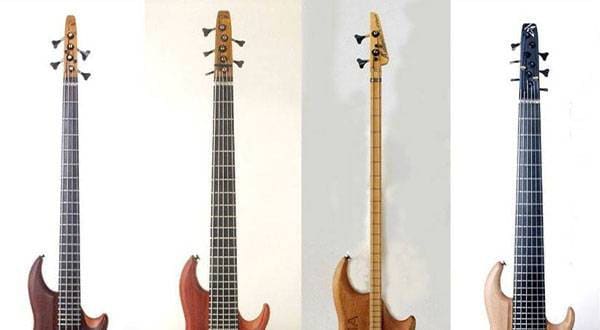
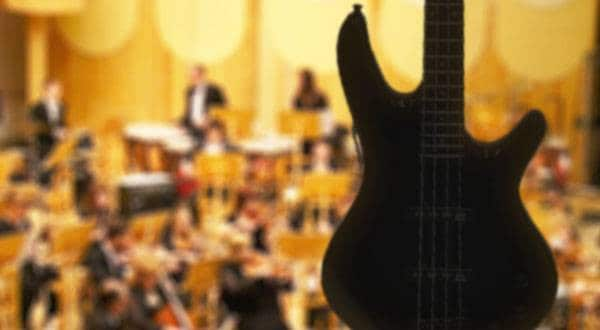
 ギターのお手入れ
ギターのお手入れ
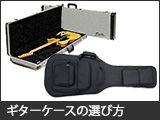 ギターケースの選び方
ギターケースの選び方
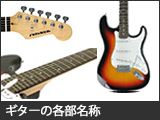 ギターの各部名称
ギターの各部名称
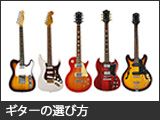 ギターの選び方
ギターの選び方
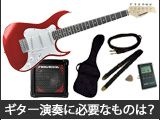 ギター演奏に必要なものは?
ギター演奏に必要なものは?
 ギタースタートガイド
ギタースタートガイド
